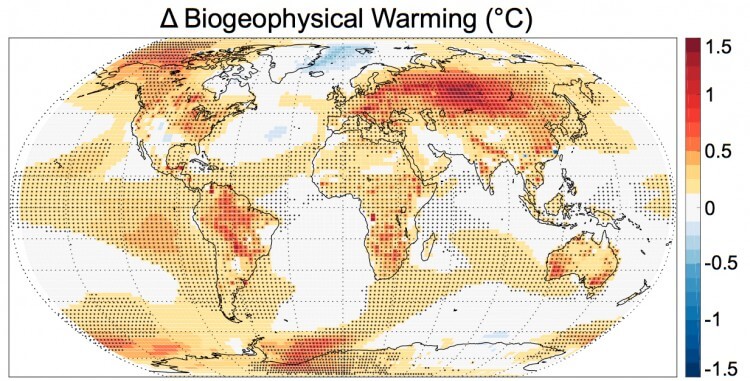In some parts of the world, CO2 levels have risen so high that plant leaves have begun to thicken.
Because thicker plant leaves are less efficient at absorbing carbon dioxide, this seemingly harmless physiological response to rising carbon dioxide levels may worsen the effects of climate change, according to researchers at the University of Washington.
Every year, plants absorb massive amounts of carbon dioxide from the atmosphere through photosynthesis, the process by which most plants synthesize food from water and carbon dioxide.
This process has removed billions of tons of carbon dioxide from the Earth’s atmosphere, helping to mitigate the impact of human fossil fuel emissions.
But, as carbon dioxide levels continue to rise and leaves thicken, the world’s forests will become less efficient at pulling in the greenhouse gas.
As a result, huge amounts of carbon dioxide will be left in the atmosphere, potentially raising the global temperature an extra 0.3 to 1.4 degrees Celsius beyond current expectations, according to the UW study.
“Plants have been observed to change their traits, such as the thickness of leaves, in response to future environmental conditions, but the implications of these changes for climate have not yet been quantified,” said senior author Abigail Swann, a UW assistant professor of atmospheric sciences and biology.
Swann and lead author Marlies Kovenock, a UW doctoral student in biology, used computer simulations that represent the earth’s atmosphere, ocean and land surface to test how a change in leaf thickness would impact climate projections.
In doing so, they were able to estimate the effects that thickening leaves would have on surface temperatures, plant growth and the amount of carbon dioxide the plants remove from the atmosphere through photosynthesis.
In their models, they tested the amount of thickening for a carbon dioxide level of 710 parts per million (ppm), which is expected to occur by about 2070 in the highest emissions scenarios. The concentration of carbon dioxide in the atmosphere today stands at around 410 ppm.

“We show that changes in plant traits could have large scale climate impacts, including higher temperatures and relative decreases in plant photosynthesis which have not been previously accounted for,” Swann said.
“This occurs because thicker leaves are more costly for plants to build, and therefore they are able to build fewer leaves, leading to less evaporative cooling of the land surface and less removal of carbon dioxide from the atmosphere by plants.”
Thickening leaves is a physiological response observed in most types of leaved plants, with the exception of grasses, Kovenock explained.
“The leading hypothesis for why leaves get thicker is that as carbon dioxide increases, plants are able to photosynthesize more and make more sugar, but they might not be able to actually grow more tissues like stems and leaves because they are missing some other resource like nutrients,” said Kovenock.
“All that extra sugar that they create just ends up getting stored in the leaves, leading to thicker leaves. The thicker leaves may also help them concentrate nutrients like nitrogen over a smaller leaf area and keep their photosynthetic rates high.”
The global carbon sink contributed by plants has played a huge role in mitigating the impacts of fossil fuel emissions. This could change if plant leaves thicken as they are expected to.
Through their modeling, the researchers found that thickening leaves could leave about 5.8 petagrams, or 6.39 billion tons, of carbon dioxide in the atmosphere per year. Fossil fuel emissions generate about 8 petagrams of carbon dioxide pollution every year.
Their modeling also showed that the effects would be distributed unevenly, and could result in a host of unforeseen impacts on climate and weather patterns in some areas.
For example, the temperature in parts of Eurasia and the Amazon basin is expected to see a higher minimum increase in temperature, where thicker leaves could hamper evaporative cooling by plants and cloud formation.
The researchers emphasized that this is only one way that plant physiology may influence the global climate in the future, and that any accurate climate models must consider plant responses.
“If this single trait — leaf thickness — in high carbon dioxide levels has such a significant impact on the course of future climate change, we believe that global climate models should take other aspects of plant physiology and plant behavior into account when trying to forecast what the climate will look like later this century,” Kovenock said in a statement.



